Development of a Building-Scale Meteorological Prediction System Including a Realistic Surface Heating
Abstract
1. Introduction
2. Description of the Building-Scale Meteorological Prediction System
2.1. Computational Fluid Dynamics (CFD) Model
2.2.1. The Governing Equations
2.2.2. Numeric Representation
2.2. The Microscale Urban Surface Energy (MUSE) Model
2.3. The Building-Scale Meteorological Prediction System
3. Validations
3.1. Validation of the CFD Model against Wind Tunnel Data
3.2. Validation of the MUSE Model against Field Measurements in a High-Rise Commercial Area
3.3. Validation of the Building-Scale Meteorological Prediction System against Field Measurement
4. The Effects of Realistic Surface Heating on Pedestrian-Level Wind and Temperature Fields
4.1. The Thermal Effects on Pedestrian-Level Wind Environment
4.2. The Thermal Effects on Pedestrian-Level Thermal Environment
5. Summary and Conclusions
Author Contributions
Funding
Acknowledgments
Conflicts of Interest
References
- World Urbanization Prospects: The 2014 Revision, Highlights; United Nations: New York, NY, USA, 2014.
- Oke, T.R. City size and the urban heat island. Atmos. Environ. 1973, 7, 769–779. [Google Scholar] [CrossRef]
- Kim, H.-H. Urban heat island. Int. J. Remote Sens. 1992, 13, 2319–2336. [Google Scholar] [CrossRef]
- Brown, M.J.; Lawson, R.E.; DeCroix, D.S.; Lee, R.L. Mean flow and turbulence measurements around a 2-D array of buildings in a wind tunnel. In Proceedings of the 11th Joint Conference on the Applications of Air Pollution Meteorology with the AWMA, Long Beach, CA, USA, 9–14 January 2000. [Google Scholar]
- Brown, M.J.; Lawson, R.E.; DeCroix, D.S.; Lee, R.L. Comparison of centerline velocity measurements obtained around 2D and 3D building arrays in a wind tunnel. In Proceedings of the 2001 International Symposium on Environmental Hydraulics, Tempe, AZ, USA, 5–8 December 2001. [Google Scholar]
- Uehara, K.; Murakami, S.; Oikawa, S.; Wakamatsu, S. Wind tunnel experiments on how thermal stratification affects flow in and above urban street canyons. Atmos. Environ. 2000, 34, 1553–1562. [Google Scholar] [CrossRef]
- Allwine, K.J.; Leach, M.J.; Stockham, L.W.; Shinn, J.S.; Hosker, R.P.; Bowers, J.F.; Pace, J.C. Overview of Joint Urban 2003—An Atmospheric dispersion study in Oklahoma City. In Proceedings of the AMS Symposium on Planning, Nowcasting, and Forecasting in the Urban Zone, Seattle, WA, USA, 11–15 January 2004. [Google Scholar]
- Park, M.-S.; Park, S.-H.; Chae, J.-H.; Choi, M.-H.; Song, Y.; Kang, M.; Roh, J.-W. High-resolution urban observation network for user-specific meteorological information service in the Seoul Metropolitan Area, South Korea. Atmos. Meas. Tech. 2017, 10, 1575–1594. [Google Scholar] [CrossRef]
- Kim, J.-J.; Baik, J.-J. A numerical study of thermal effects on flow and pollutant dispersion in urban street canyons. J. Appl. Meteorol. 1999, 38, 1249–1261. [Google Scholar] [CrossRef]
- Baik, J.-J.; Kim, J.-J.; Fernando, H.J. A CFD model for simulating urban flow and dispersion. J. Appl. Meteorol. 2003, 42, 1636–1648. [Google Scholar] [CrossRef]
- Kwak, K.-H.; Baik, J.-J.; Lee, S.-H.; Ryu, Y.-H. Computational fluid dynamics modelling of the diurnal variation of flow in a street canyon. Bound.-Layer Meteorol. 2011, 141, 77. [Google Scholar] [CrossRef]
- Park, S.-B.; Baik, J.-J.; Raasch, S.; Letzel, M.O. A large-eddy simulation study of thermal effects on turbulent flow and dispersion in and above a street canyon. J. Appl. Meteorol. Climatol. 2012, 51, 829–841. [Google Scholar] [CrossRef]
- Santiago, J.L.; Krayenhoff, E.S.; Martilli, A. Flow simulations for simplified urban configurations with microscale distributions of surface thermal forcing. Urban Clim. 2014, 9, 115–133. [Google Scholar] [CrossRef]
- Nazarian, N.; Kleissl, J. CFD simulation of an idealized urban environment: Thermal effects of geometrical characteristics and surface materials. Urban Clim. 2015, 12, 141–159. [Google Scholar] [CrossRef]
- Nazarian, N.; Kleissl, J. Realistic solar heating in urban areas: Air exchange and street-canyon ventilation. Build. Environ. 2016, 95, 75–93. [Google Scholar] [CrossRef]
- Resler, J.; Krc, P.; Belda, M.; Jurus, P.; Benesova, N.; Lopata, J.; Vlcek, O.; Damaskova, D.; Eben, K.; Derbek, P.; et al. PALM-USM v1.0: A new urban surface model integrated into the PALM large-eddy simulation model. Geosci. Model Dev. 2017, 10, 3635–3659. [Google Scholar] [CrossRef]
- Lee, D.-I.; Woo, J.-W.; Lee, S.-H. An analytically based numerical method for computing view factors in real urban environments. Theor. Appl. Climatol. 2018, 131, 445–453. [Google Scholar] [CrossRef]
- Gronemeier, T.; Raasch, S.; Ng, E. Effects of Unstable Stratification on Ventilation in Hong Kong. Atmosphere 2017, 8, 168. [Google Scholar] [CrossRef]
- Toparlar, Y.; Blocken, B.; Maiheu, B.; Van Heijst, G.J.F. A review on the CFD analysis of urban microclimate. Renewable Sustainable Energy Rev. 2017, 80, 1613–1640. [Google Scholar] [CrossRef]
- Wang, W.; Xu, Y.; Ng, E. Large-eddy simulations of pedestrian-level ventilation for assessing a satellite-based approach to urban geometry generation. Graph. Models 2018, 95, 29–41. [Google Scholar] [CrossRef]
- Krayenhoff, E.S.; Voogt, J.A. A microscale three-dimensional urban energy balance model for studying surface temperatures. Bound.-Layer Meteorol. 2007, 123, 433–461. [Google Scholar] [CrossRef]
- Zhang, Y.Q.; Arya, S.P.; Snyder, W.H. A comparison of numerical and physical modeling of stable atmospheric flow and dispersion around a cubical building. Atmos. Environ. 1996, 30, 1327–1345. [Google Scholar] [CrossRef]
- Arya, S.P. Air Pollution Meteorology and Dispersion; Oxford University Press: New York, NY, USA, 1999; ISBN 978-01-9507-398-0. [Google Scholar]
- Sini, J.-F.; Anquetin, S.; Mestayer, P.G. Pollutant dispersion and thermal effects in urban street canyons. Atmos. Environ. 1996, 30, 2659–2677. [Google Scholar] [CrossRef]
- Patankar, S. Numerical Heat Transfer and Fluid Flow; CRC Press: Boca Raton, FL, USA, 1980; ISBN 978-08-9116-522-4. [Google Scholar]
- Versteeg, H.K.; Malalasekera, W. An Introduction to Computational, Fluid Dynamics: The Finite Volume Method; Longman: Harlow, UK, 1995; ISBN 978-01-3127-498-3. [Google Scholar]
- Launder, B.E.; Spalding, D.B. The numerical computation of turbulent flows. In Numerical Prediction of Flow, Heat Transfer, Turbulence and Combustion; Elsevier: Berlin, Germany, 1983; pp. 96–116. [Google Scholar]
- Oke, T.R. The energetic basis of the urban heat island. Q. J. R. Meteorol. Soc. 1982, 108, 1–24. [Google Scholar] [CrossRef]
- Lee, D.-I.; Lee, S.-H. A microscale urban surface energy (MUSE) model for real urban environments. Environ. Modell. Software. 2019, in press. [Google Scholar]
- Oke, T.R. Street design and urban canopy layer climate. Energy Build. 1988, 11, 103–113. [Google Scholar] [CrossRef]
- Lee, S.-H.; Park, S.-U. A vegetated urban canopy model for meteorological and environmental modelling. Bound.-Layer Meteorol. 2008, 126, 73–102. [Google Scholar] [CrossRef]
- Swinbank, W.C. Long-wave radiation from clear skies. Q. J. R. Meteorol. Soc. 1963, 89, 339–348. [Google Scholar] [CrossRef]
- Wang, W.; Ng, E. Air ventilation assessment under unstable atmospheric stratification—A comparative study for Hong Kong. Build. Environ. 2018, 130, 1–13. [Google Scholar] [CrossRef]
- Letzel, M.O.; Helmke, C.; Ng, E.; An, X.; Lai, A.; Raasch, S. LES case study on pedestrian level ventilation in two neighbourhoods in Hong Kong. Meteorol. Z. 2012, 21, 575–589. [Google Scholar] [CrossRef]
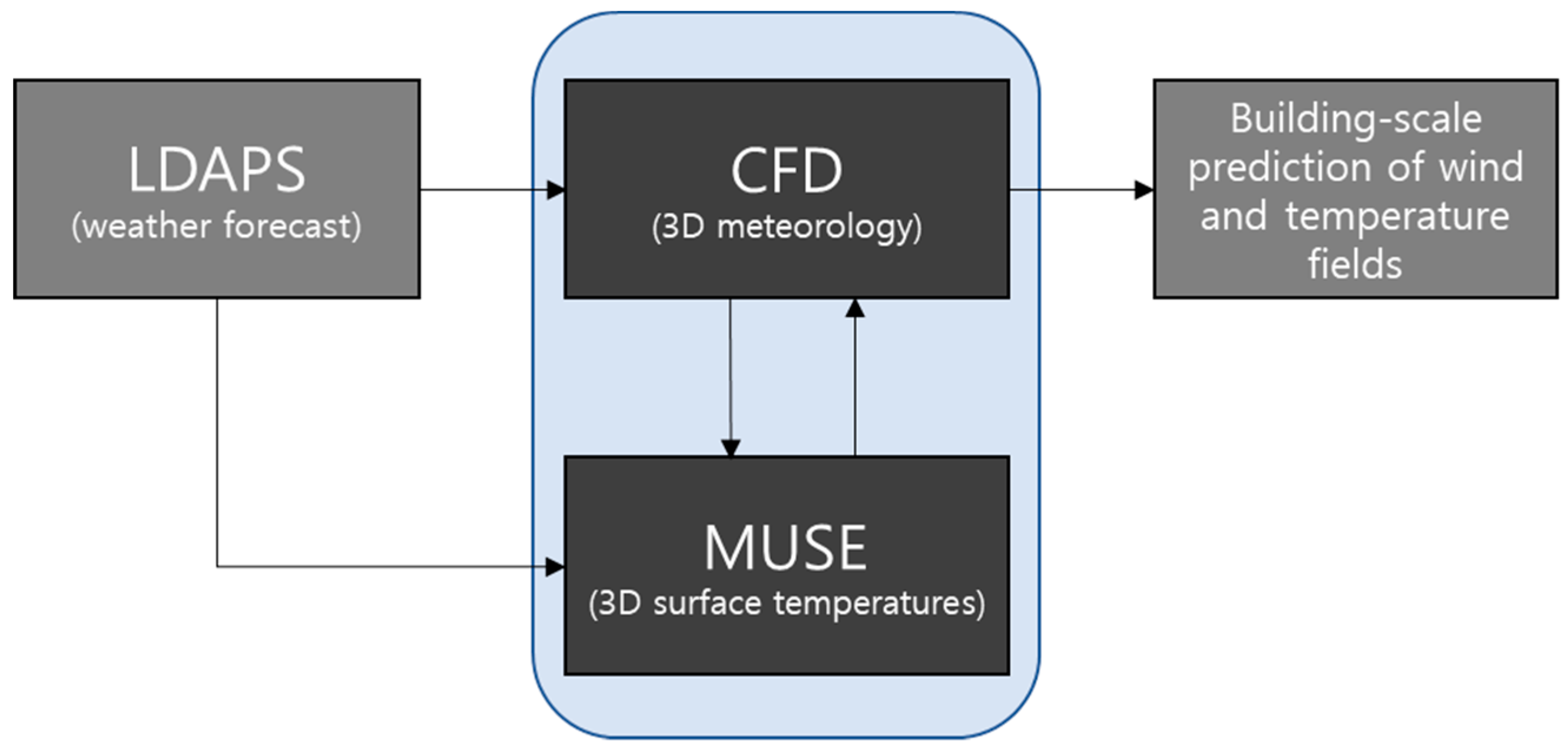
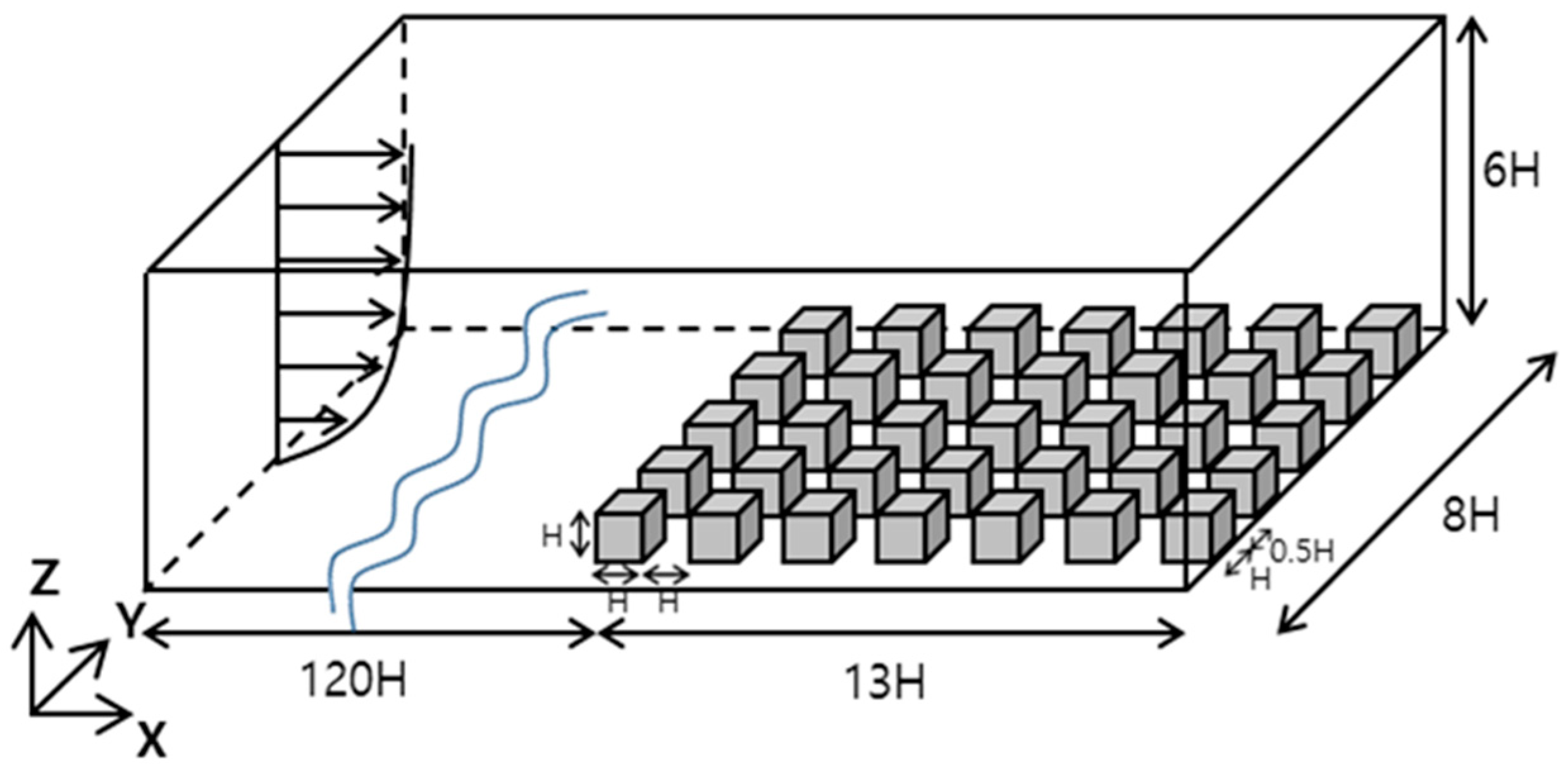
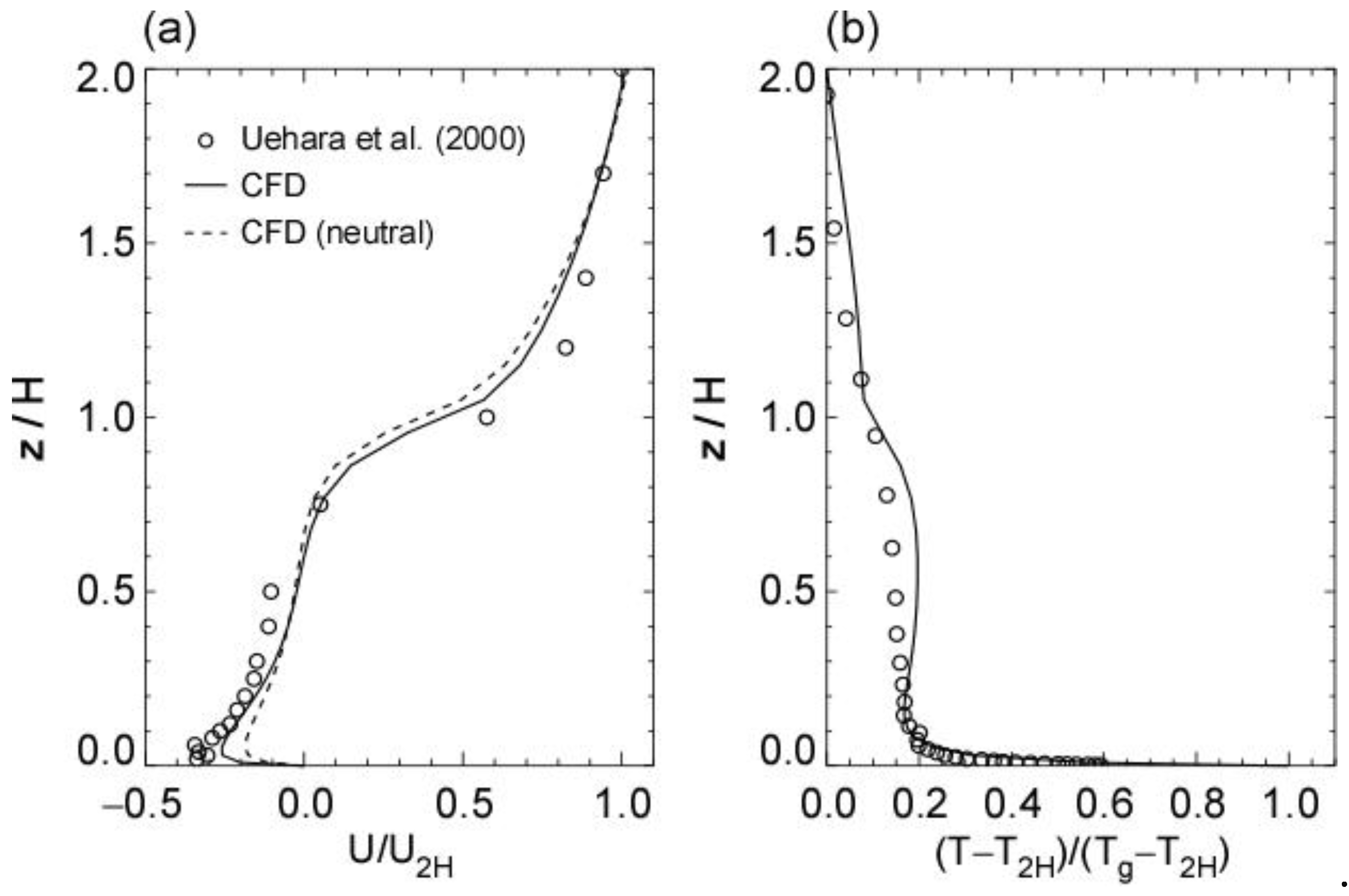
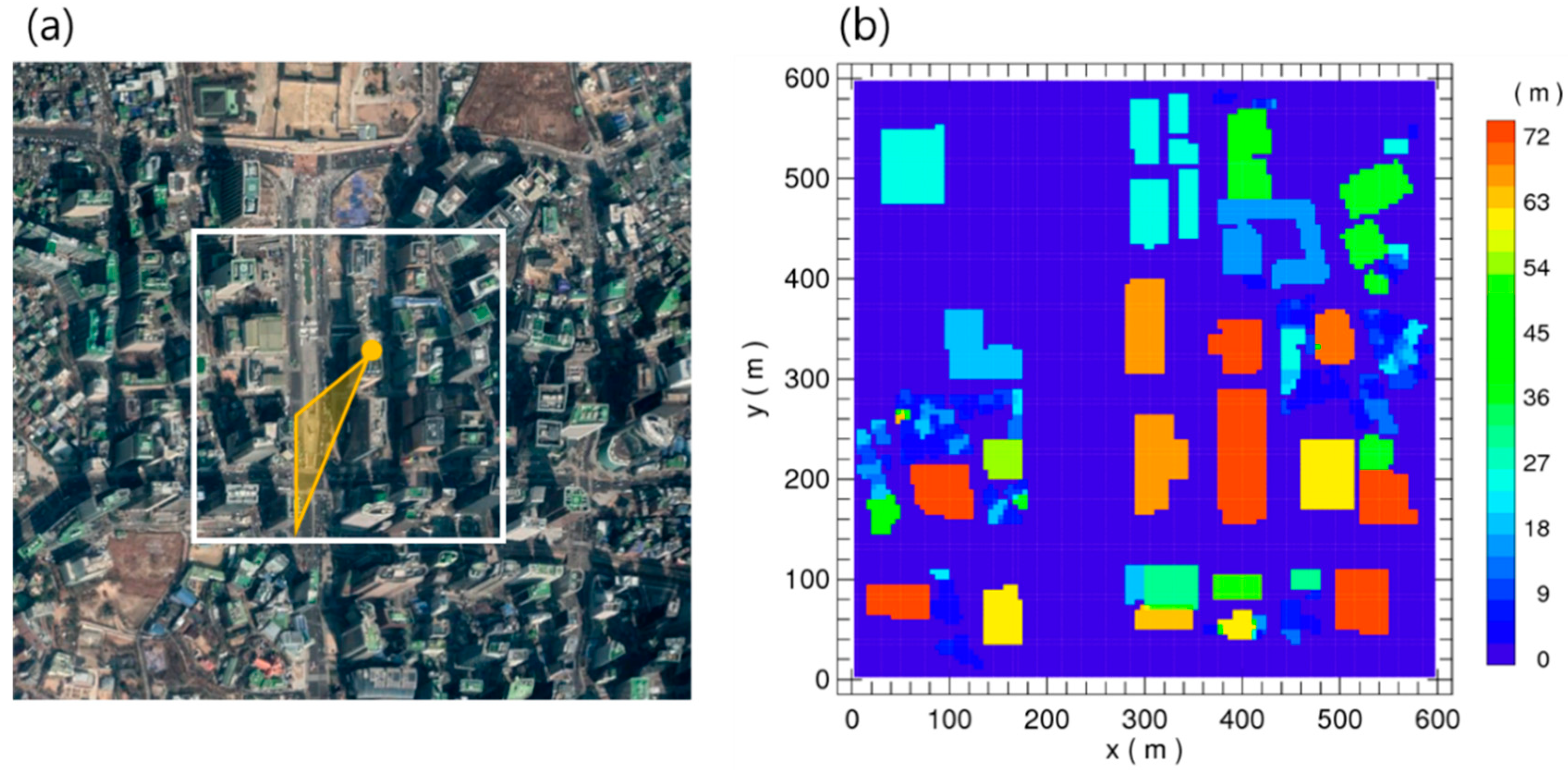
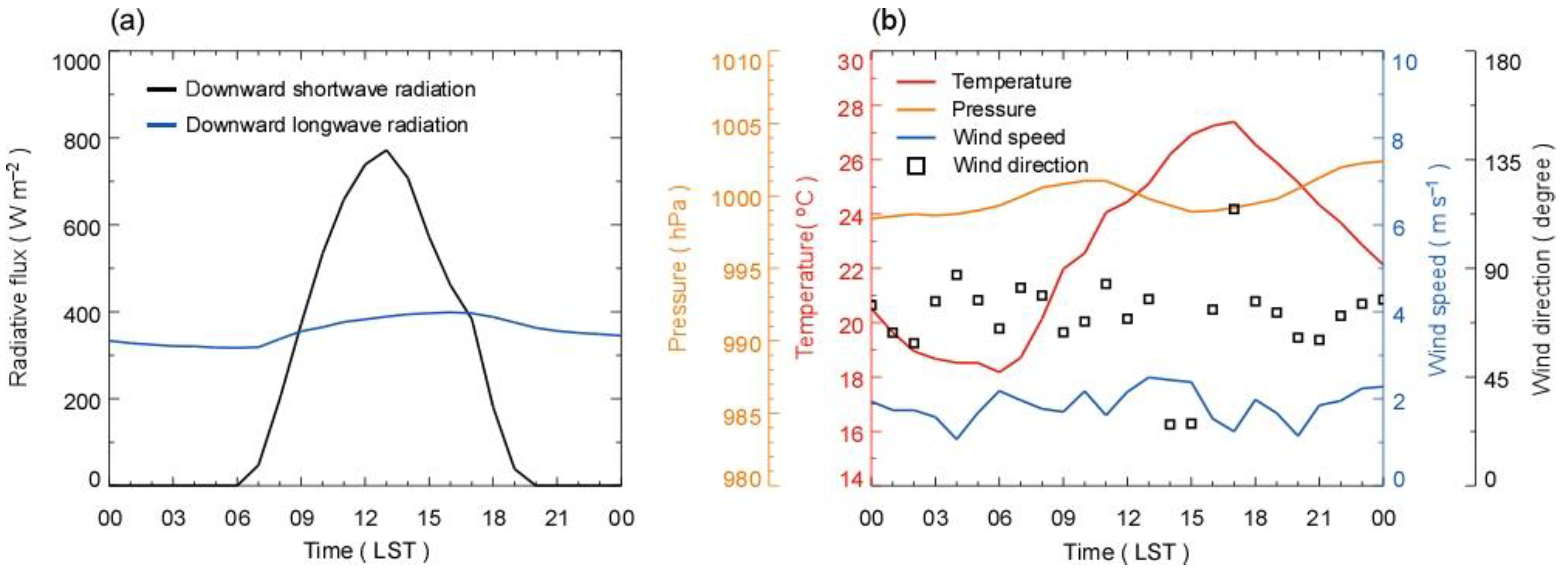
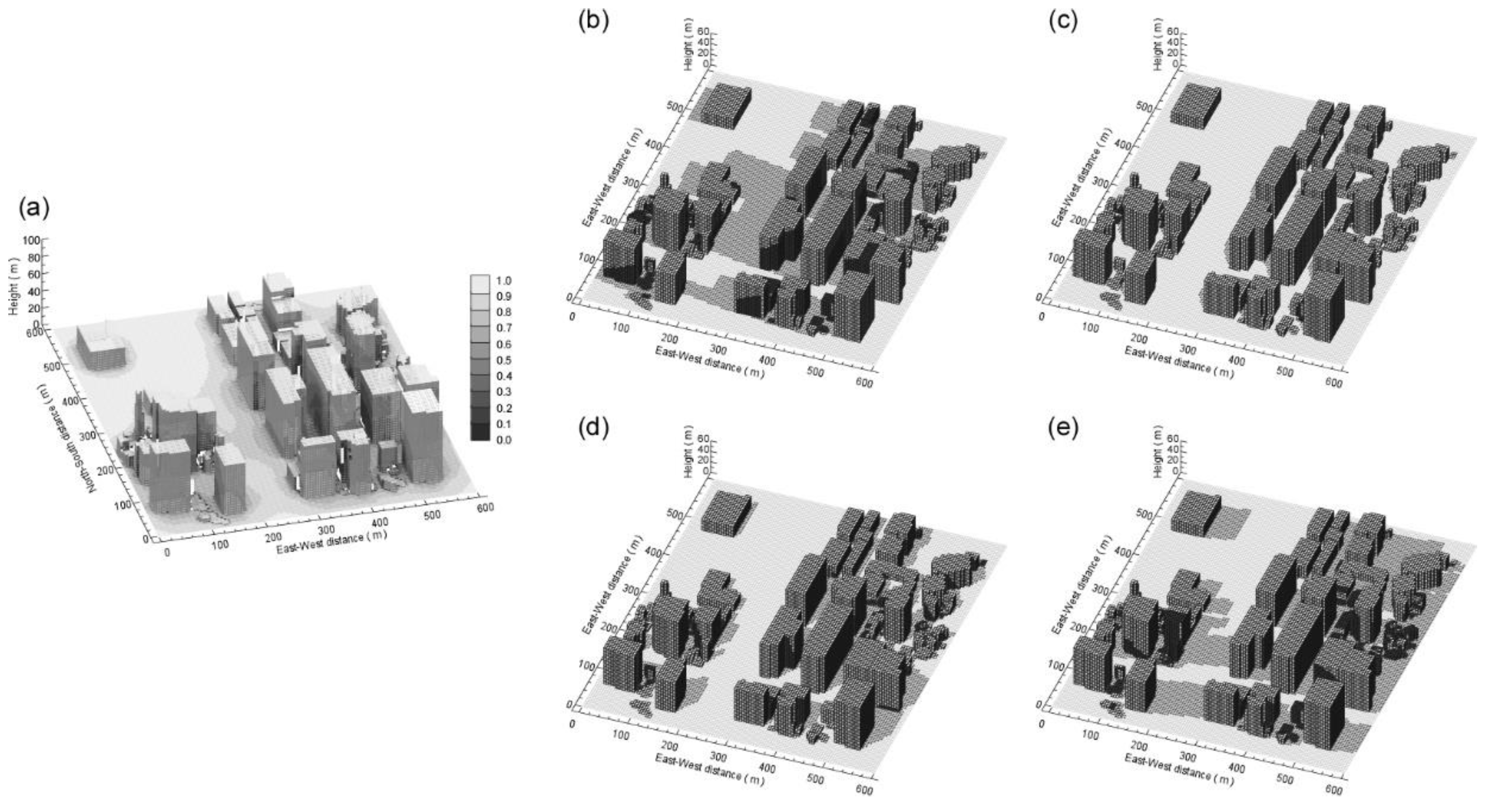
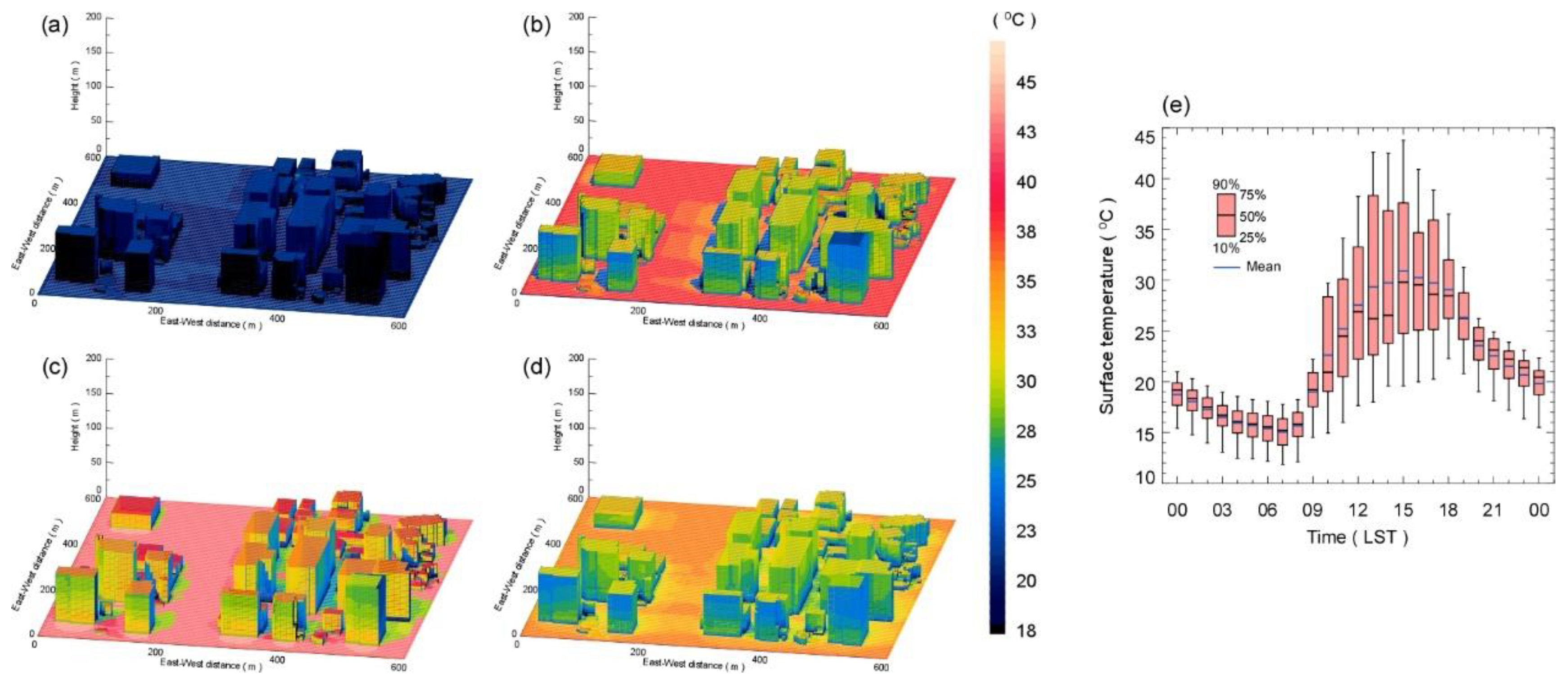
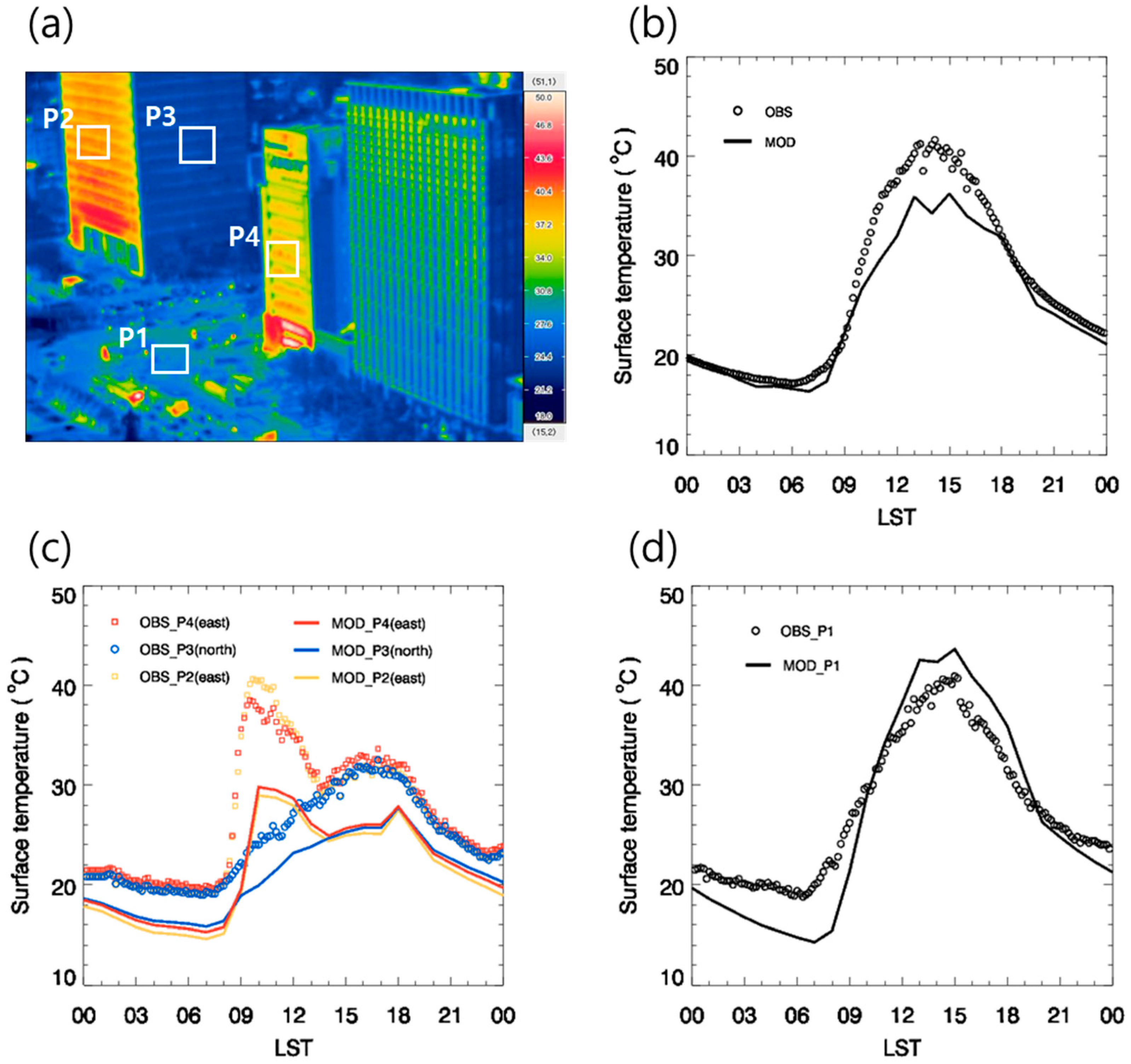
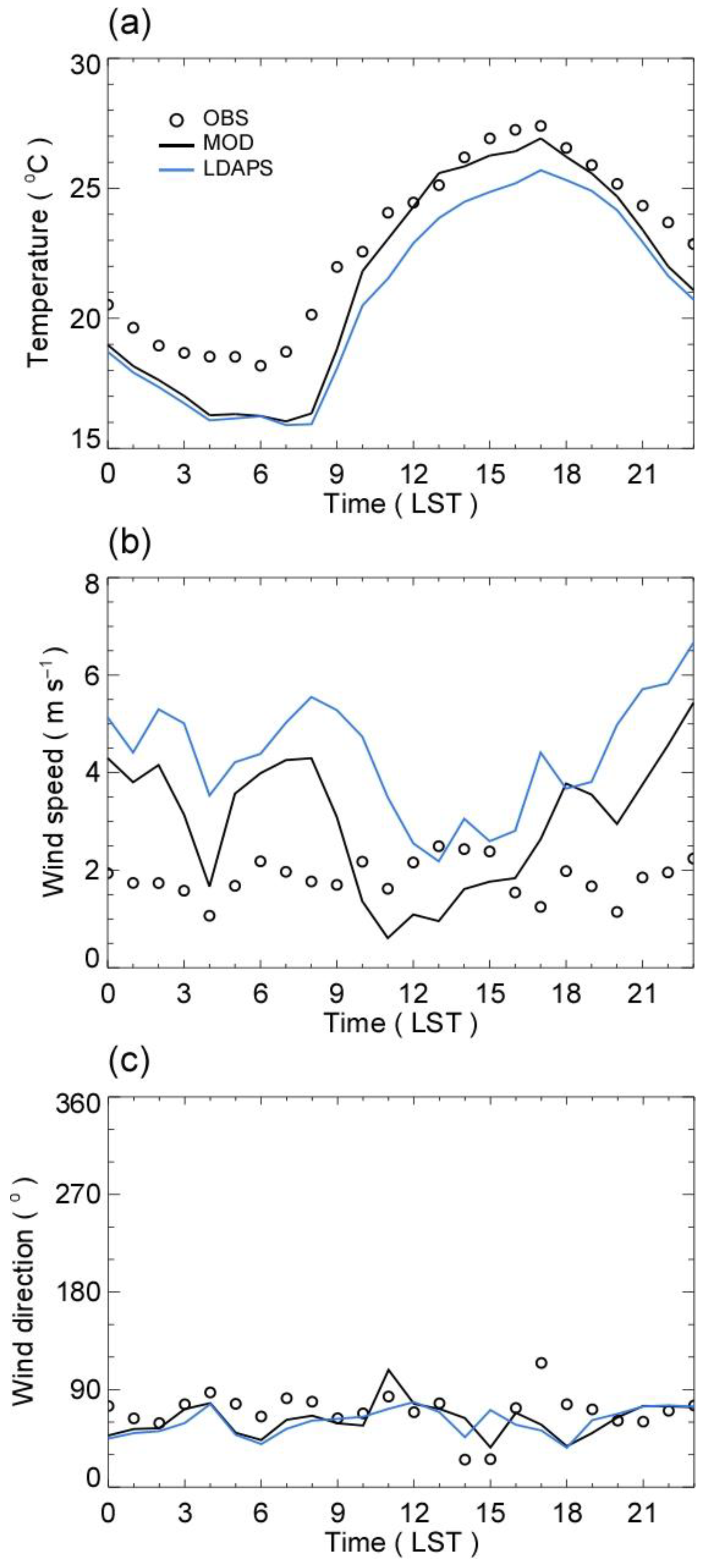
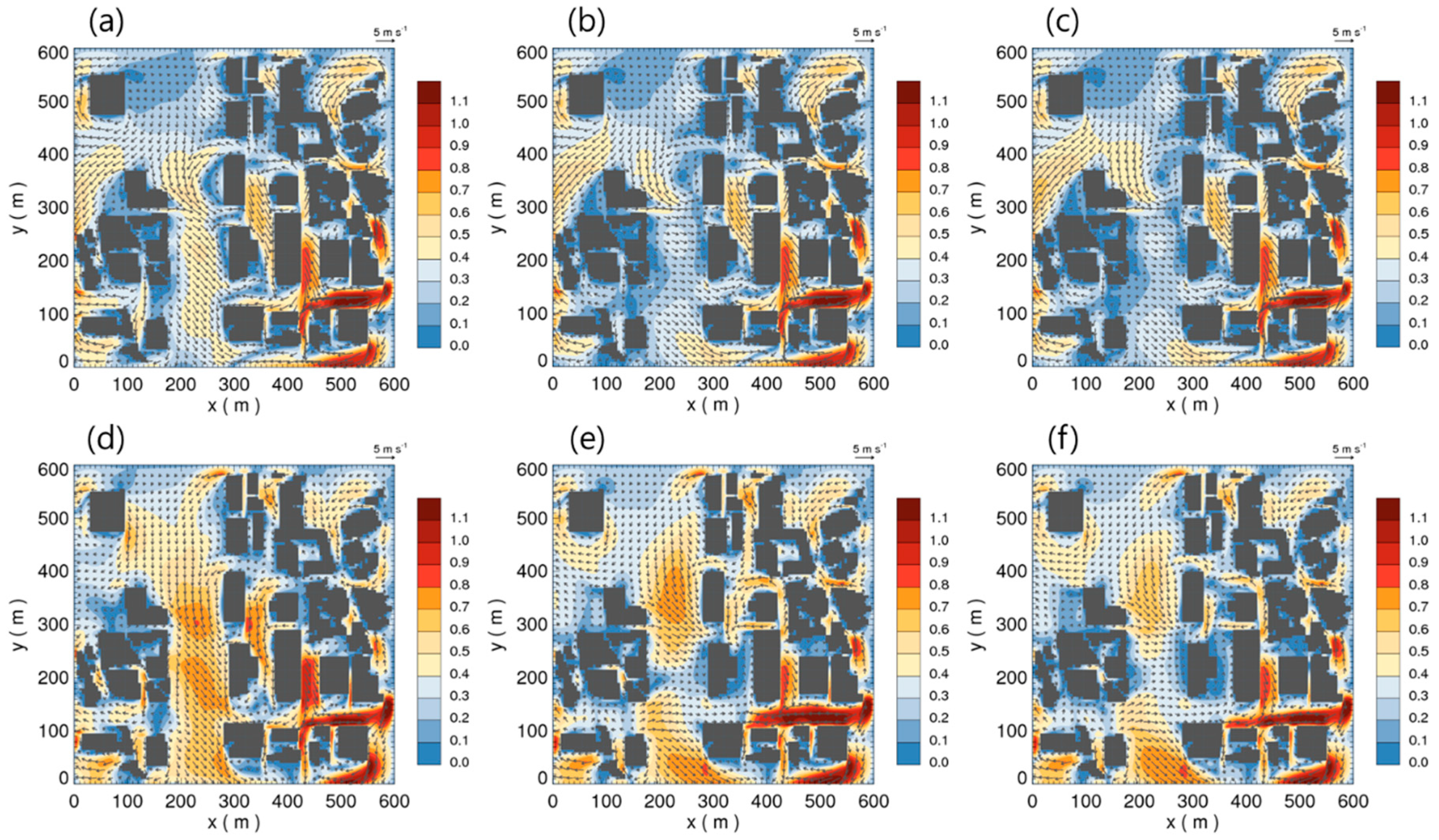
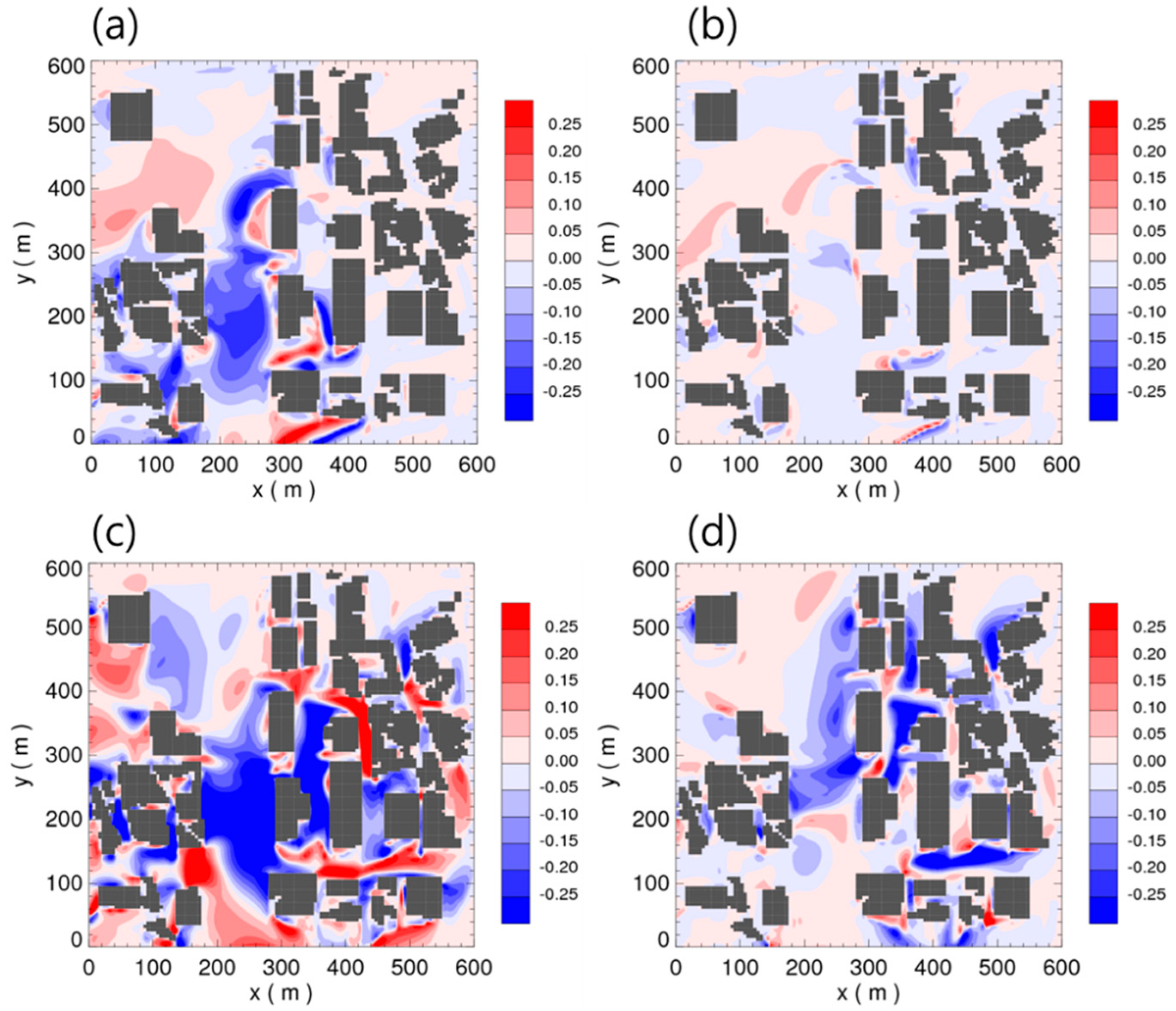
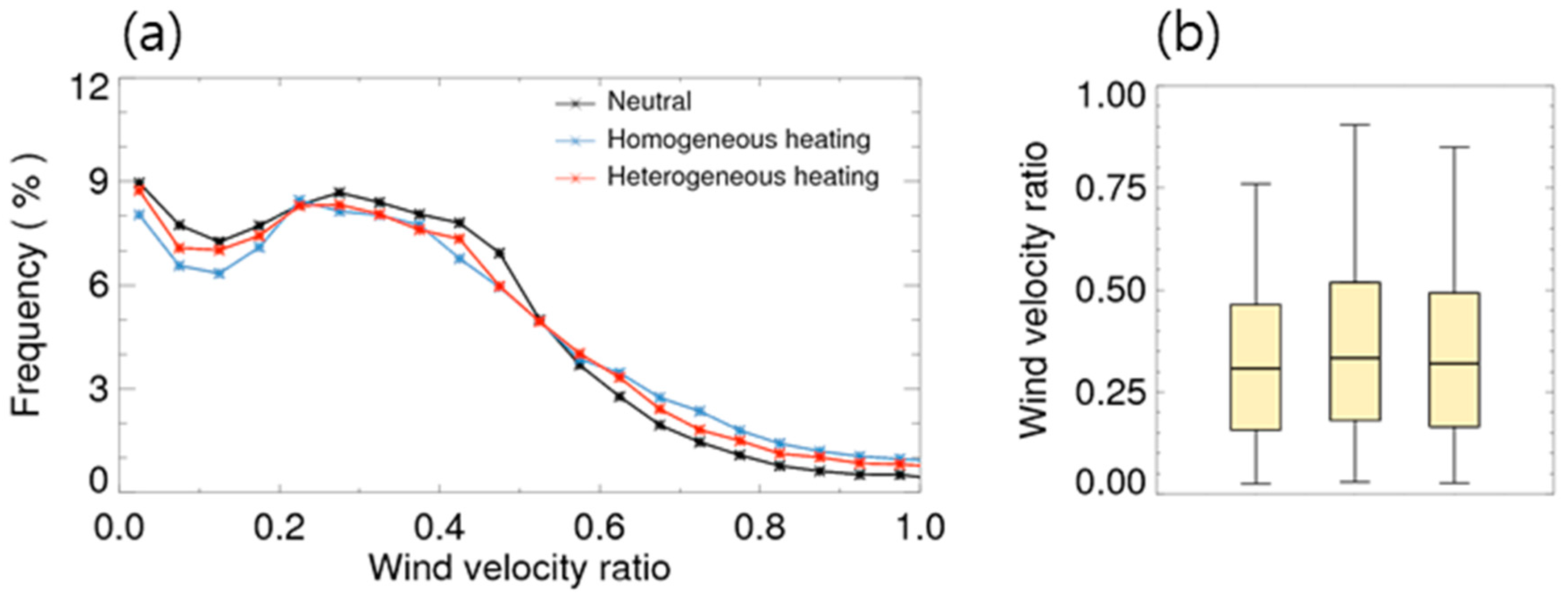
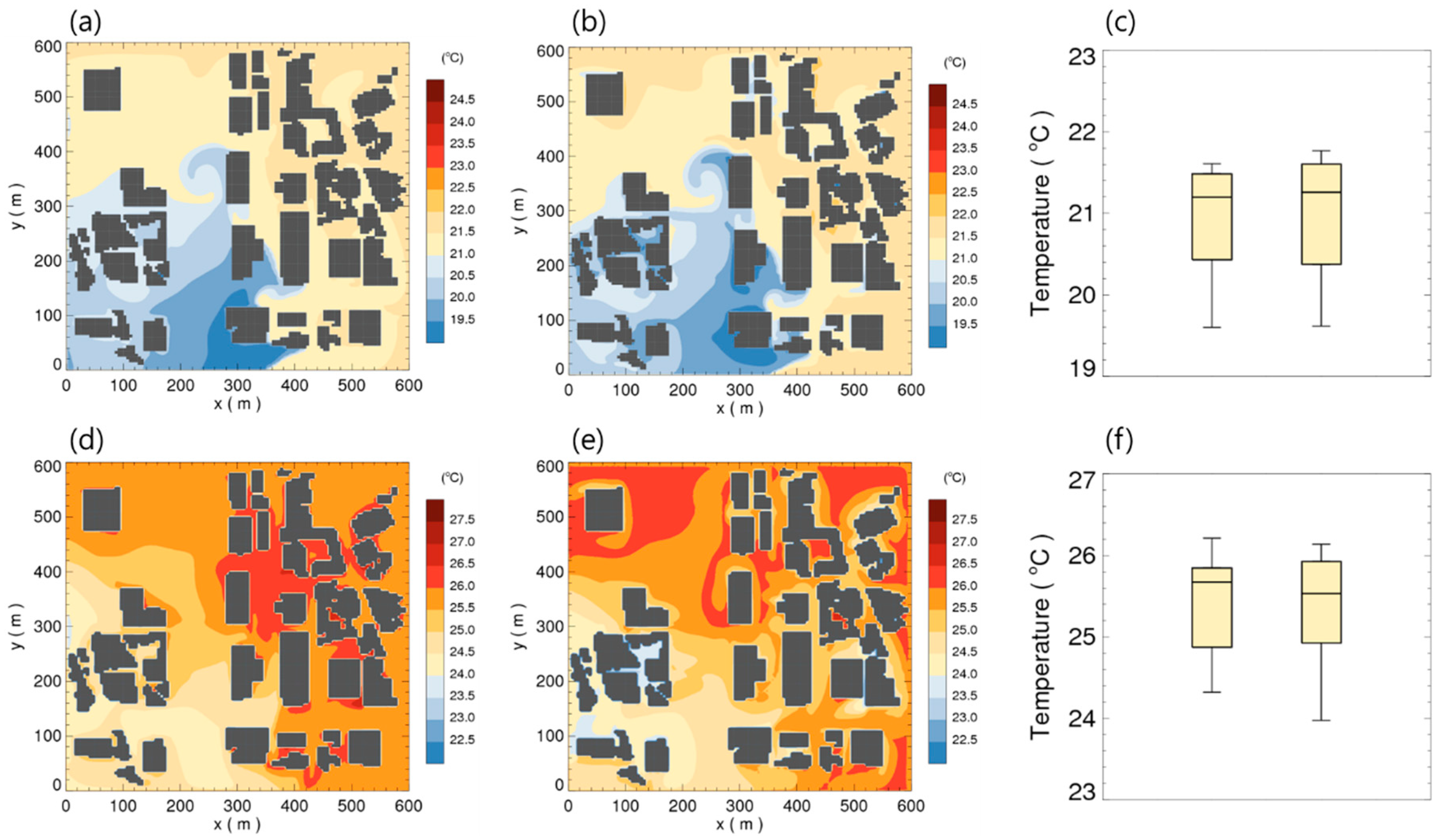
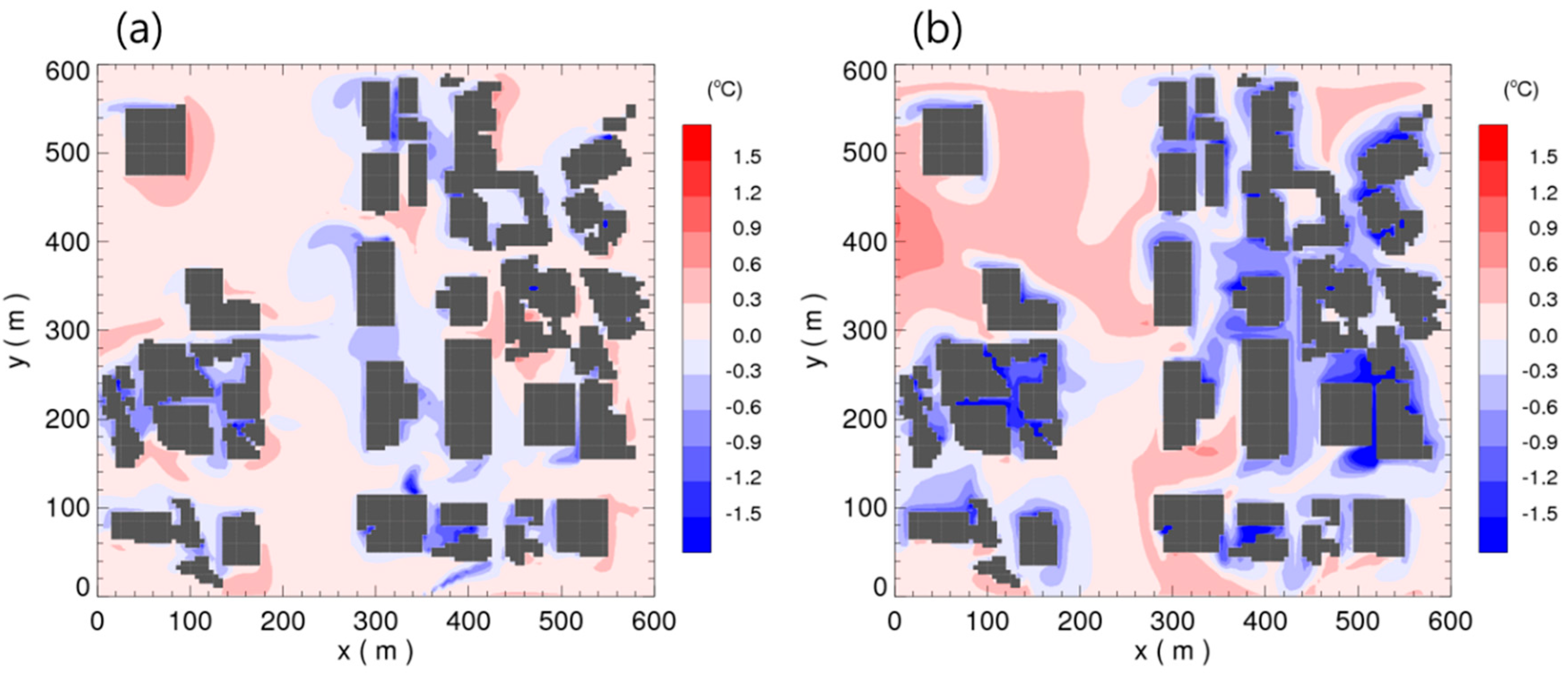
© 2020 by the authors. Licensee MDPI, Basel, Switzerland. This article is an open access article distributed under the terms and conditions of the Creative Commons Attribution (CC BY) license (http://creativecommons.org/licenses/by/4.0/).
Share and Cite
Kim, D.-J.; Lee, D.-I.; Kim, J.-J.; Park, M.-S.; Lee, S.-H. Development of a Building-Scale Meteorological Prediction System Including a Realistic Surface Heating. Atmosphere 2020, 11, 67. https://doi.org/10.3390/atmos11010067
Kim D-J, Lee D-I, Kim J-J, Park M-S, Lee S-H. Development of a Building-Scale Meteorological Prediction System Including a Realistic Surface Heating. Atmosphere. 2020; 11(1):67. https://doi.org/10.3390/atmos11010067
Chicago/Turabian StyleKim, Dong-Jin, Doo-Il Lee, Jae-Jin Kim, Moon-Soo Park, and Sang-Hyun Lee. 2020. "Development of a Building-Scale Meteorological Prediction System Including a Realistic Surface Heating" Atmosphere 11, no. 1: 67. https://doi.org/10.3390/atmos11010067
APA StyleKim, D.-J., Lee, D.-I., Kim, J.-J., Park, M.-S., & Lee, S.-H. (2020). Development of a Building-Scale Meteorological Prediction System Including a Realistic Surface Heating. Atmosphere, 11(1), 67. https://doi.org/10.3390/atmos11010067





